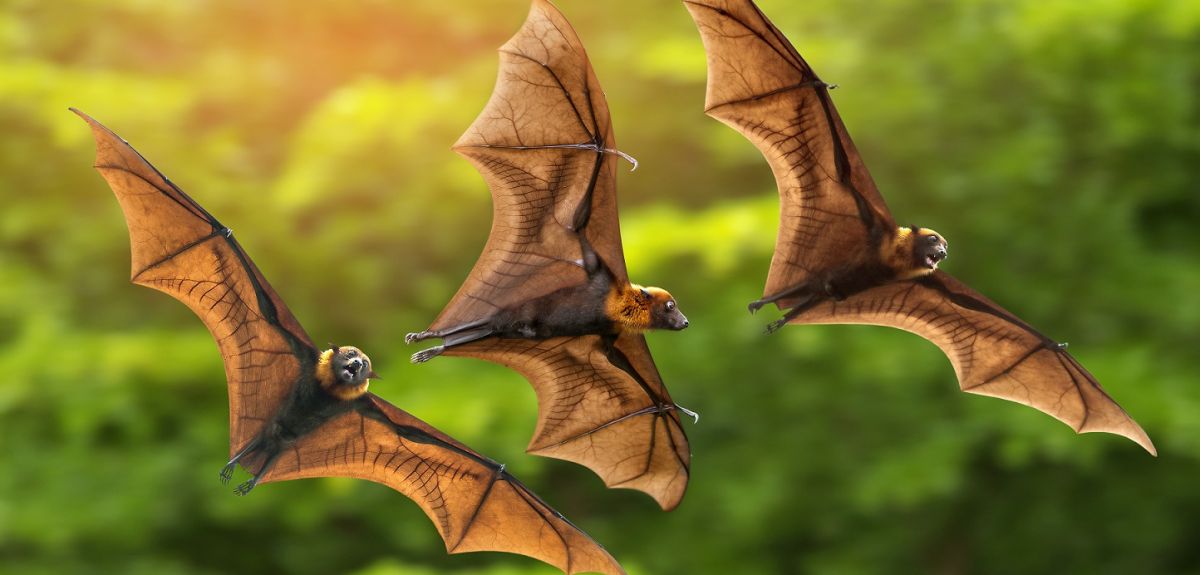About Me

I am Alessandra Faccone, a senior at Bethesda-Chevy Chase High School. I volunteer with Bethesda Green’s Environmental Leader program, which is part of their Be Green Living initiative. I love STEM fields, and want to pursue a major of environmental engineering in college. For my final project,
I led a project on bat conservation that is designed to design and build bat houses to sustain the threatened bat population in Bethesda. I researched the Little Brown Bat and interviewed experts in the species conservation field. Through outreach to my community, I found volunteers to aid me in building bat houses, which I set up in designated locations. The weeks following were spent monitoring the houses, compiling bat conservation information, and discovering ways for individuals to contribute to the bat population.
Bat Conservation
Classifications of Bats:
Bats are carnivores and the only mammal that can fly. There are 1,300 species. The two categories are microbats and megabats. Micro bats eat insects like moths and hunt after dark; they also use echolocation to find prey and navigate caves. Megabats live in the tropics and eat fruit, pollen, and nectar; they have a better sense of smell, but don’t use echolocation.
The Little Brown Bat (Myotis lucifugus):
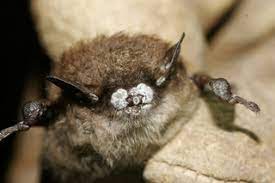 Quick Facts:
Quick Facts:
– Weight – 0.29 oz
– Wingspan – 8” to 11”
– Body Length – 3.1” to 3.7”
– Lifespan – up to 34 years
This bat is a microbat. Its population dramatically declined in Maryland because of the White-nose Syndrome. As a result, it is listed as a ‘species of greatest conservation need’ and ‘highly state rare.’ It is vulnerable to a number of predators during hibernation and pesticides. The Little Brown bat differs from other bats by its size and color. It is a small bat; its fur is uniformly dark brown and glossy on the back and upper parts with slightly paler, grayish fur underneath. It has relatively large feet with long hairs that extend past the toenails. Its diet consists of mainly aquatic insects, including midges, mosquitoes, mayflies, and caddisflies, but they have been known to prey on gnats, crane flies, beetles, wasps, and moths too. They drink fresh water daily, and find their prey while foraging over water sources. They prefer to roost near water and move in and out of adjacent vegetation. They can catch up to 1,200 insects in just one hour, and “consume millions of bugs a night, acting as a natural pest control for plants. Thanks to bats, farmers might rely less on toxic pesticides, which costs them millions of dollars each year.” (nat geo)
Little Brown bats, like other bats, use echolocation to locate their prey, and capture it by scooping with their wings or grabbing with their mouth, depending on if the pretty is in flight or above water. In the summer, they often roost in buildings, mostly hot dry attics but sometimes beneath tar paper, under shingles, or behind shutters. In the winter, they hibernate, often using caves or mines with a community to keep them warm. These bats, like others, also use different roosts depending on the time of day; this is done to keep predators unaware. The Little Brown Bat has active periods at dusk, and the next two or three hours are peak activity periods. They have been known to be active before dawn as well, and on warm winter days above 50 degrees, they may emerge to eat.
Threats:
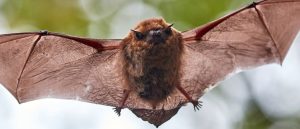 There are many threats facing Little Brown bats, but also bats in the DMV area in general. These threats include the White-Nose Syndrome, habitat loss, artificial lighting, and wind farms. While some of these threats do not affect the Little Brown bat’s population in Bethesda, they are important to acknowledge because they affect all bats in all parts of the nation.
There are many threats facing Little Brown bats, but also bats in the DMV area in general. These threats include the White-Nose Syndrome, habitat loss, artificial lighting, and wind farms. While some of these threats do not affect the Little Brown bat’s population in Bethesda, they are important to acknowledge because they affect all bats in all parts of the nation.
White-Nose Syndrome – The main threat to bat populations in all of North America is the White-nose syndrome, which affects hibernating bats. This syndrome is caused by a fungus called Pseudogymnoascus destructans (Pd); it grows in old, dark and damp places and attacks the bare skin of bats in the winter while they are in hibernation. Once bats are infected with it, they become more active than usual and burn up fat they need to survive the winter. The fungus causes abnormal behavior that threatens the bats’ survival. So far, the syndrome has killed millions of bats in North America, and up to 90 to 100 percent of bats have died in some areas. Read more about it here.
Habitat Loss – Another daunting threat facing bats is habitat loss and construction. Bats inhabit most natural environments, from woodlands to deserts. However, these habitats, like hedgerows, woodlands and ponds are lost to construction, deforestation, and roads. This industrialization does not just affect bat habitats, it also affects the habitats of their prey. As a result, the insects they consume are far less abundant, also caused by pesticides and intensive farming practices. Man-made infrastructure often disturb the bats during roosting or worse, hibernation when they are the most vulnerable. In addition, general urbanization causes hazardous conditions and disease, besides habitat destruction and scarce food.
Artificial Lighting – An additional threat is artificial lighting. It can delay or prevent bats from emerging from roosts. It also leads to bats abandoning or becoming entombed in the roost. Their feeding behavior can venture further away from the roost, which in turn affects their commuting and foraging routes.
Wind Farms – The last major threat to bat populations are wind turbines, with both direct and indirect hazards. Collision and barotrauma–damage to tissues from air pressure changes around turbines–is the direct hazard wind farms pose, but the construction of them leads to habitat loss and fragmentation. This affects their roosts, commuting routes and foraging areas. However, this is not an issue for species like the Little Brown bat with populations in the Bethesda area since Maryland wind farms are almost all offshore according to the United States Geological Survey.
Ways to Help
There are many ways for you to help your local bat population. You can adopt a bat with Bat Conservation International’s adopt-a-bat program. You can also donate to nonprofits and organizations that are dedicated to bat conservation and or care for wildlife that include bats. You can also buy and build your own bat box kits to set up in your backyard.
Bat Box Building Workshop
I wanted to help my local bat population by setting up bat boxes in the local park as a way to combat the loss of habitat that accompanied the urbanization of Bethesda. I organized a workshop, held on Saturday, April 2nd, in a park in Bethesda to build bat boxes. With volunteers from the local high school and followers of Bethesda green, we assembled 6 bat box kits to be put up in the locations around Rock Creek park marked on the map below.
Photos from the Workshop:
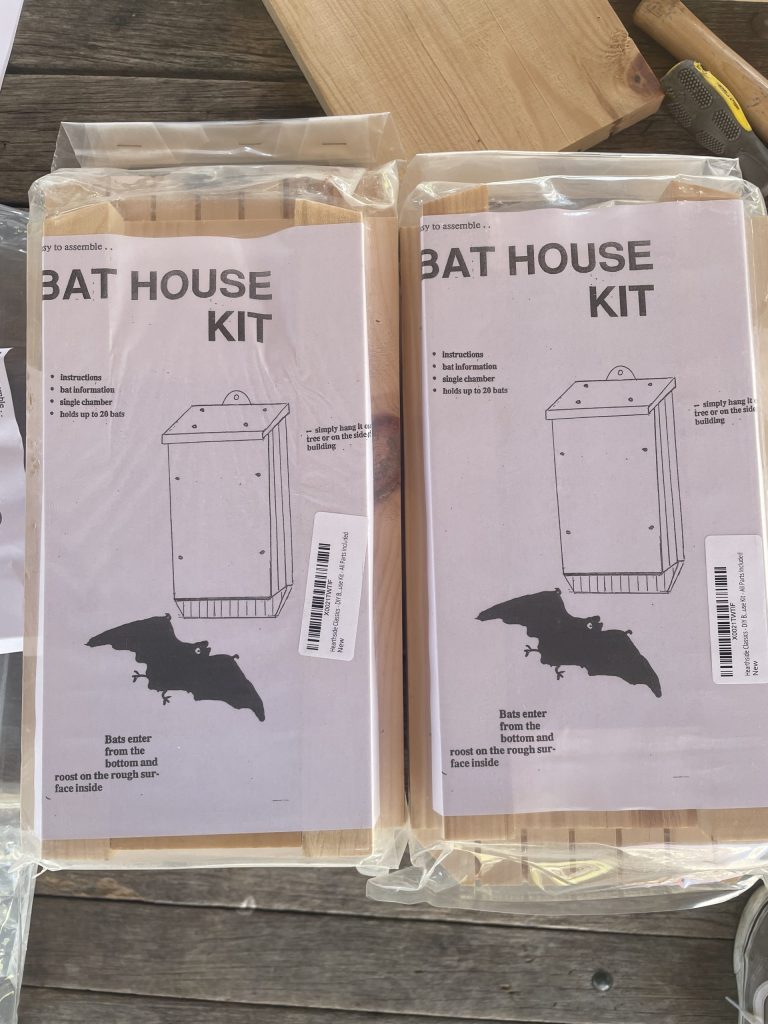
Disassembled kits
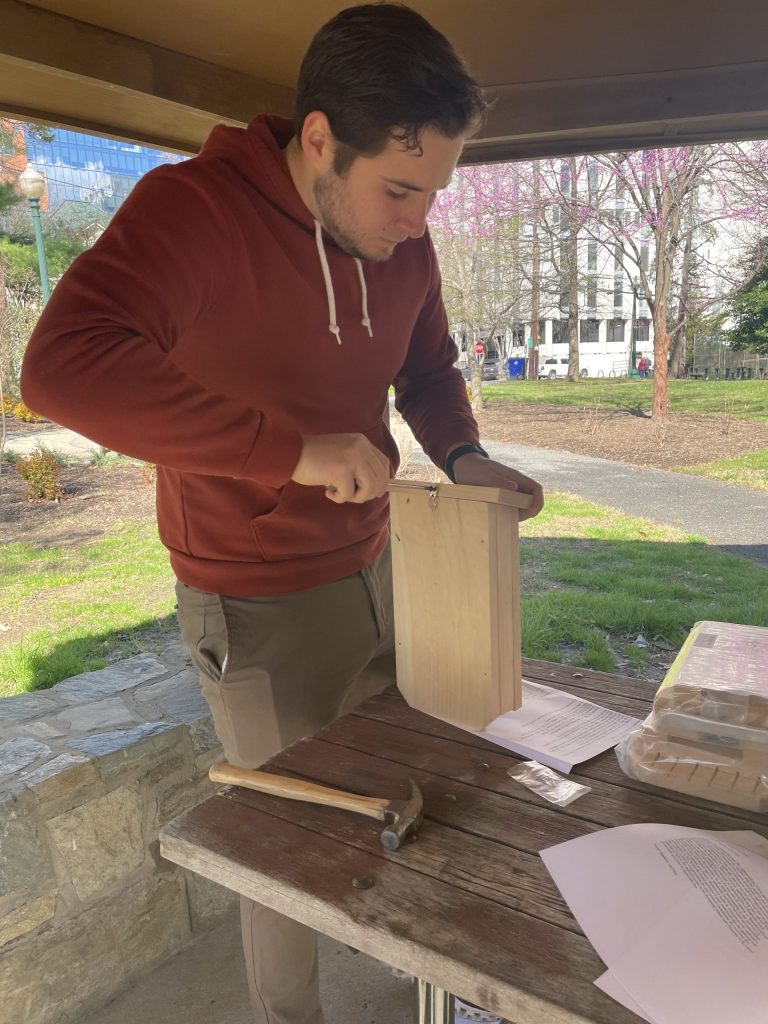
One of the participants finishing his bat box by screwing in the hanger.
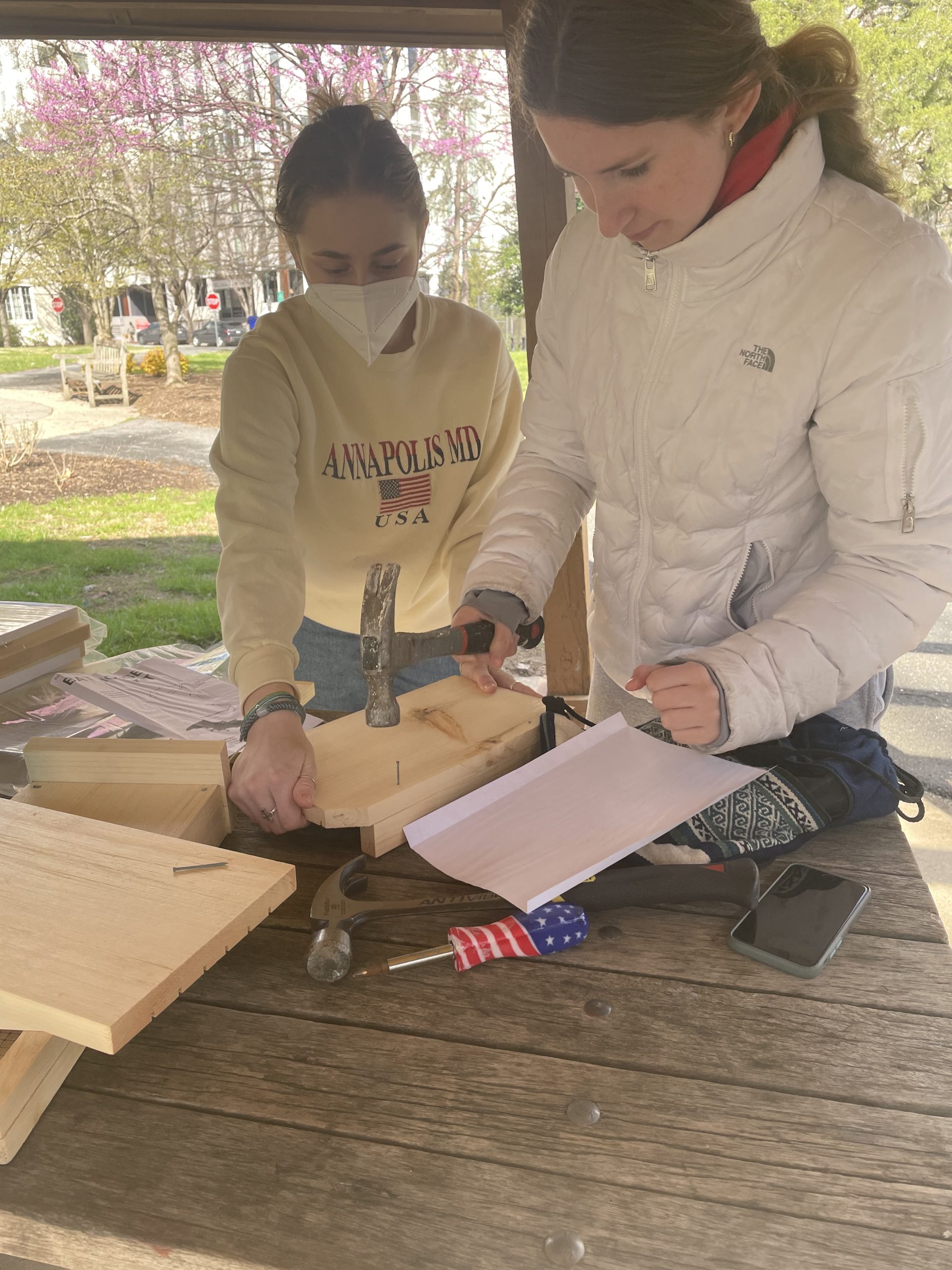
A student and I work on assembling a box by nailing the sides to the back of the box.
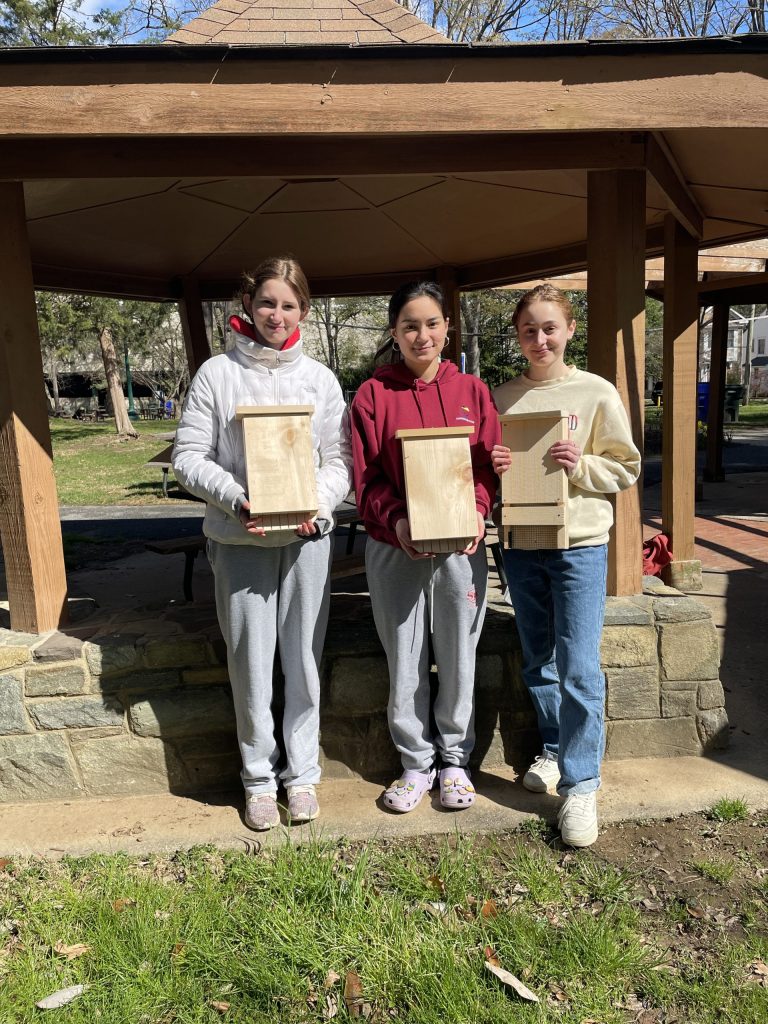
The other high school students and I with the bat boxes we made.
Interviews with Experts
Interview with Jeffrey Popp
 Jeffrey Popp joined the Chesapeake Bay Trust in March 2016 and leads the Green Streets Green Jobs Green Towns, Anne Arundel County Forestry and Mini Greening, and Montgomery County Stormwater grant programs. Before coming to the Trust, Jeff was the Manager of Conservation Projects with the Wildlife Habitat Council where he coordinated, designed, and managed on-the-ground corporate habitat restoration projects in both rural and urban settings. Working with landowners and other community partners, Jeff helped navigate and overcome the challenges of creating successful restoration projects that benefits wildlife, water quality, and surrounding communities. Jeff has over 15 years of experience in habitat design and community outreach, and specializes in native plants, reptiles and amphibians, and habitat restoration. Jeff has worked for the Maryland Department of Natural Resources, and as Co-Director for the Terrapin Institute. He has served on Governor appointed task forces relating to reptile, amphibian, pollinators and fisheries conservation and remains active in natural resource and conservation education issues on national and local levels. Jeff hold a Bachelor’s degree in Biology from Towson University. Click Here to Read the Interview with Jeffrey Popp
Jeffrey Popp joined the Chesapeake Bay Trust in March 2016 and leads the Green Streets Green Jobs Green Towns, Anne Arundel County Forestry and Mini Greening, and Montgomery County Stormwater grant programs. Before coming to the Trust, Jeff was the Manager of Conservation Projects with the Wildlife Habitat Council where he coordinated, designed, and managed on-the-ground corporate habitat restoration projects in both rural and urban settings. Working with landowners and other community partners, Jeff helped navigate and overcome the challenges of creating successful restoration projects that benefits wildlife, water quality, and surrounding communities. Jeff has over 15 years of experience in habitat design and community outreach, and specializes in native plants, reptiles and amphibians, and habitat restoration. Jeff has worked for the Maryland Department of Natural Resources, and as Co-Director for the Terrapin Institute. He has served on Governor appointed task forces relating to reptile, amphibian, pollinators and fisheries conservation and remains active in natural resource and conservation education issues on national and local levels. Jeff hold a Bachelor’s degree in Biology from Towson University. Click Here to Read the Interview with Jeffrey PoppInterview with Andi Pupke
 Andi Pupke is the Education & Outreach Director at Chesapeake Wildlife Heritage. With a focus on habitat restoration projects both large and small, Andi Pupke has been employed with Chesapeake Wildlife Heritage since 1995. She also conducts research on grassland birds and Monarch butterflies and has been tagging migrating fall Monarchs since 1999 in partnership with the University of Kansas. CWH has worked for many years to establish habitat for Monarchs and many other wildlife species, and Andi encourages and helps landowners to create Monarch waystations on their property. Andi also manages the CWH nesting structure program, conducting weekly monitoring on Purple Martin colonies and bluebird trails for landowner clients. CWH collects data on nesting structures to track population trends and improve nesting structure design and placement. Click Here to Read the Interview with Andi Pupke
Andi Pupke is the Education & Outreach Director at Chesapeake Wildlife Heritage. With a focus on habitat restoration projects both large and small, Andi Pupke has been employed with Chesapeake Wildlife Heritage since 1995. She also conducts research on grassland birds and Monarch butterflies and has been tagging migrating fall Monarchs since 1999 in partnership with the University of Kansas. CWH has worked for many years to establish habitat for Monarchs and many other wildlife species, and Andi encourages and helps landowners to create Monarch waystations on their property. Andi also manages the CWH nesting structure program, conducting weekly monitoring on Purple Martin colonies and bluebird trails for landowner clients. CWH collects data on nesting structures to track population trends and improve nesting structure design and placement. Click Here to Read the Interview with Andi Pupke


